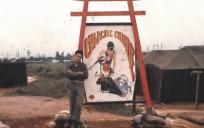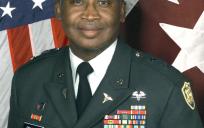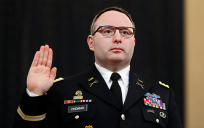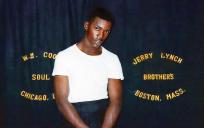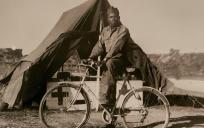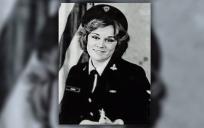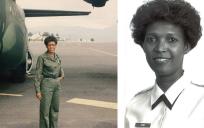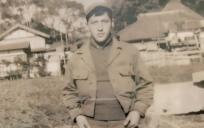Record date:
James Behn, Petty Officer 3rd Class
At first glance, life as a machinist’s mate or as a petty officer on US Navy’s dock landing ship, might appear uneventful. Yet James Behn and the crew aboard USS Belle Grove, LS-2 found themselves deployed near the eye of the storm be it the Laotian Crisis or the Cuban Missile Crisis, during the Cold War years of 1960-1964.
James Behn was born in 1941 and raised on the South Side of Chicago. He recalls a pleasant childhood with family trips and with holidays celebrated by extended family.
The idea of service was not new to the family. Behn’s father, a chemist, worked for U.S. steel and during WWII, he analyzed the quality of steel for military equipment; while his older brother served in the US Army. Since he was a teen, James loved for working on cars and hot rods. After high school, he followed up on this and attended trade school for a year, focusing on auto mechanics.
Feeling inspired to see the world, Behn enlisted in the Navy from Chicago. After completing his basic training at the nearby Great Lakes Naval Station, he trained at Machinist’s Mate School for two months although in light of his mechanical training he would have preferred to have worked with engines in a different capacity.
Assigned to the USS Belle Grove, LSD -2, with a reciprocal steam engine, he arrived at the ship’s home port at Long Beach, California, only to discover that the ship was undergoing a total overhaul, a Fleet Rehabilitation and Modernization at Portland, Oregon. After making his way there, Behn joined the crew which was living in the barracks of a neighboring ship. Finally on Dec. 29, 1960, the Belle Grove returned to Long Beach. Behn was largely responsible for running both main engines, the generator, and distilling sea water into fresh water.
Behn recalls the ship’s deployment, in February, 1961, to Southeast Asian waters, and enjoying the downtime in Hawaii when the ship was refueling. James describes his ship’s assignment – shuttling US Marines between Subic Bay in the Philippines and Okinawa, Japan, home to a critical Marine training base. The backdrop was the US commitment to deter communism in the Philippines as per Southeast Asia Treaty Organization [SEATO]. Behn and the USS Belle Grove also spent time in Thailand and Laos, transporting Marines, probably in response to President John F Kenney’s ordering of US forces into Thailand as to support non-communist factions in Laos.
After the International Agreement on the Neutrality of Laos was signed in July 1962, the ship was given a final transportation assignment before the ship departed for the US in August.
Yet after a month’s leave, in October, Behn recalls emergency orders to go to Cuba, anchor about five miles off the coast, due by the detection of Soviet backed nuclear missile sites. In his own words:
“Our ship would be right off the beach with the little boats to get the Marines out on the beach. So we were right there… next to the beach…you were not in the action until [i.e. unless] they fired at the ships from the, from Cuba...So…we stayed out there for weeks at a time before they finally decided to…to get us back to Long Beach [on Dec. 15, 1962].”
Next Behn and the Belle Grove were involved in local operations but September 1963 saw another Far East deployment, returning in February 1964.
When asked if there was bickering between Marines in Navy due to their close contact, Behn replied: “… a lot of times when, like Okinawa… [we] anchored in the harbor and they had little boats for us to take us from the ship to the shore and they would usually have the enlisted facility there. The bar and so forth just for enlisted men and then you could go into town and do what you want and you'd see the Marines and the Navy guys after they had some drinks go at it on the street.”
Deciding against a Navy career, Behn left in 1964 and used the GI Bill to study fire protection engineering at Illinois Institute of Technology. He pursued an illustrious engineering career, ending with his position in the nuclear regulatory commission in Washington. He met his wife about two years later after his discharge. They raised a son and a daughter but later went their separate ways.
Behn also reflects on the improved social changes in the status of women, blacks and homosexuals in the US Forces from his time to now. Behn views service, as an option dependent on the individual’s career prospects, noting that the Air Force and Navy would be helpful in teaching a person marketable skills.
All in all, Behn appreciates the fact that by working up the ranks in the Navy, he was forced to mature, by his increased responsibility over equipment and over men. He particularly values his learning how to do deal with people, needed both in military and civilian life.
